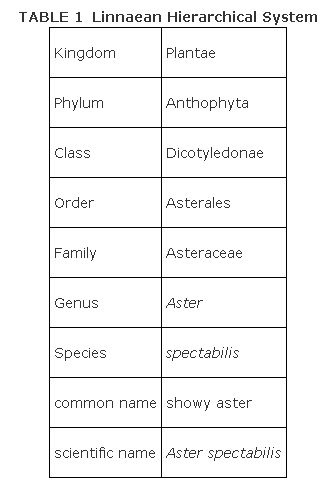Biologists around the world use today a single method with standardized rules to name plants and animals: the bionomial system of nomenclature.
The binomial system in use today gives a single name recognizable throughout the world to each individual kind of organism. The scientific name consists of two parts (in Latin): the name of the genus (plural: genera), plus the name of the particular species. The system originated with Carl Linnaeus in the middle of the eighteenth century as a shortcut to the cumbersome polynomial system then in use that required 12‐word descriptions to be written as part of the name. In the binomial system, the scientific name is italicized in print and the genus is capitalized, but the species is not.
Lay people often ridicule scientific names as unpronounceable atrocities, but these same scoffers use many genera names with little complaint. Geranium, chrysanthemum, aster, asparagus, primula, begonia, and rhododendron (as well as hundreds of others) are not only common plant names, but genera names as well. Other common names are recognizable as anglicized versions of such genera names as: Pinus, Juniperus, Cyperus, Rosa, Hyacinthus, Tulipa, Lilium and others.
Scientific names are important because they are exact: one kind of plant, one name. Common names vary from place to place and language to language, but scientific names in Latin remain the same and are recognizable anywhere in the world.
Taxonomic hierarchy
The Linnaean hierarchical system (see Table ) is a means to group similar organisms together in levels of increasing inclusiveness from the species at the bottom to the most inclusive—kingdom—at the top. Genera are groups of species, families are groups of genera, and so on up the hierarchy. Taxon (plural: taxa) is a general name given to the members of any level in the hierarchy; in Table . Aster is a taxon or Anthophyta is a taxon or spectabilis is a taxon.
|
|
|
|
|
|
|
|
